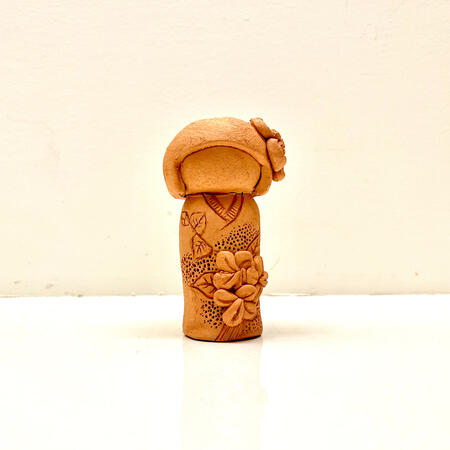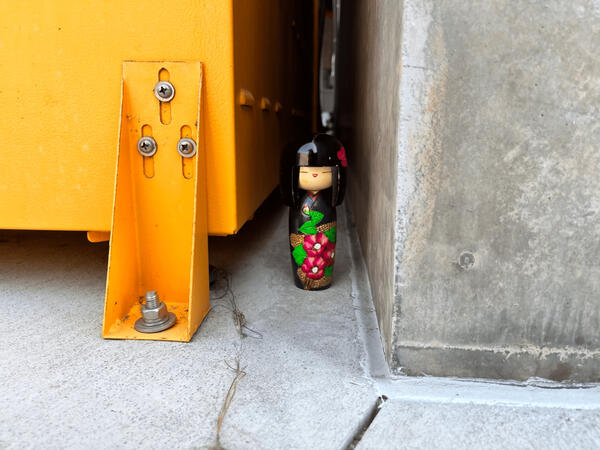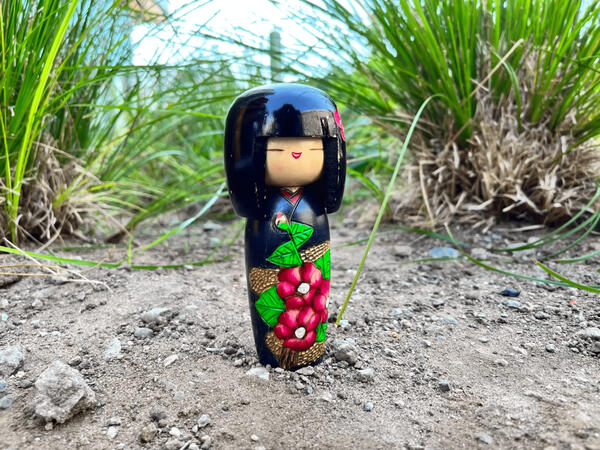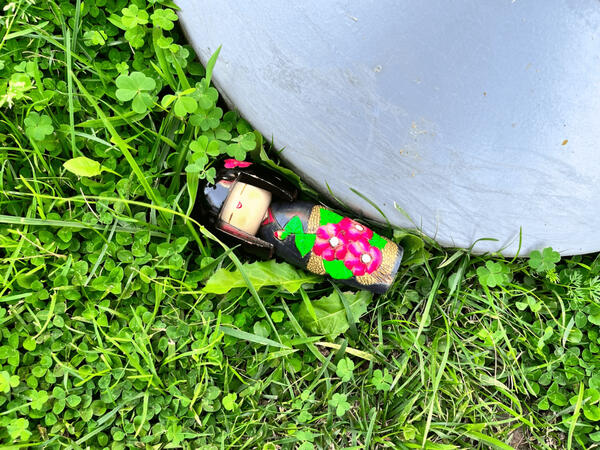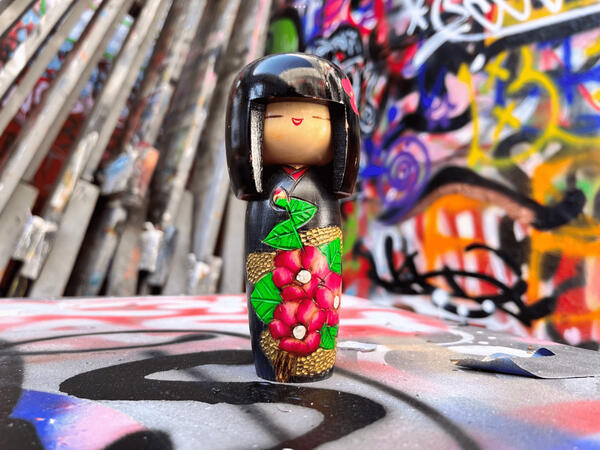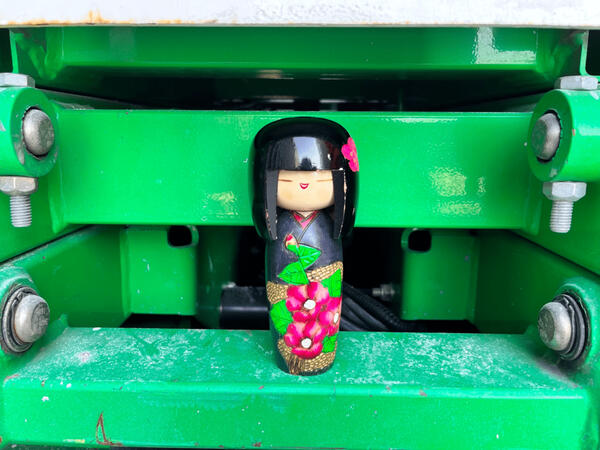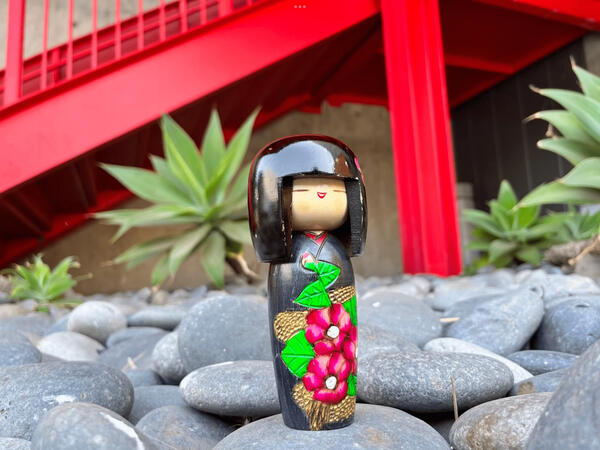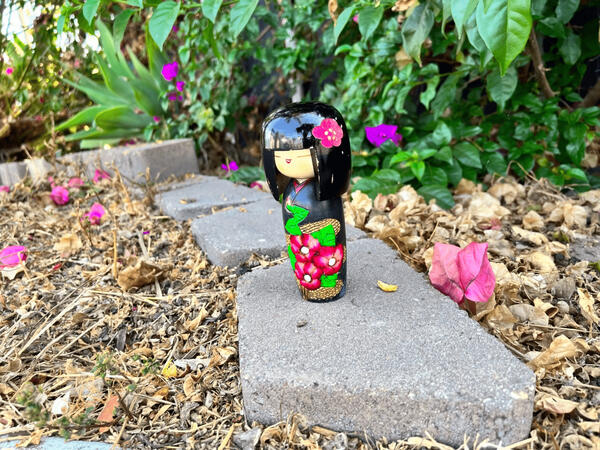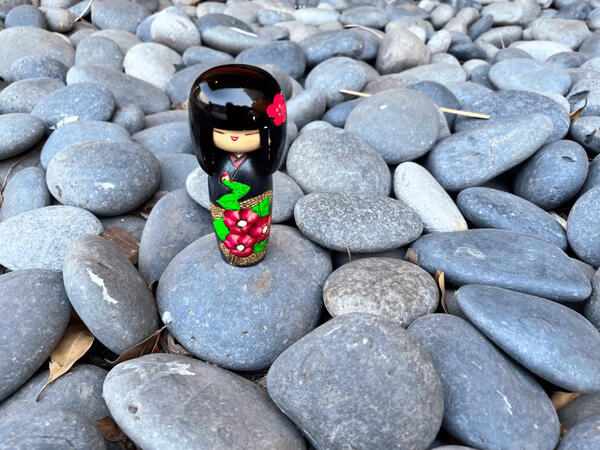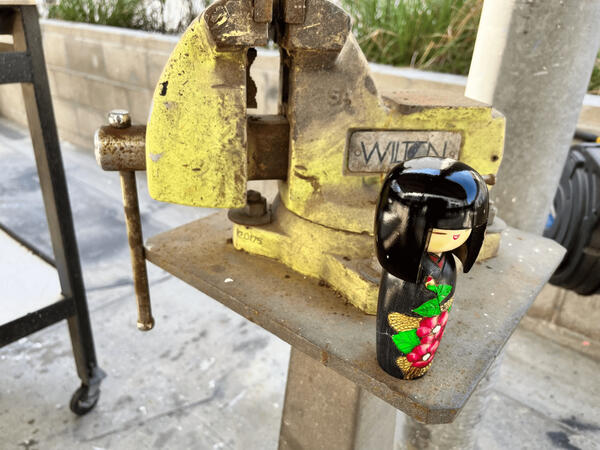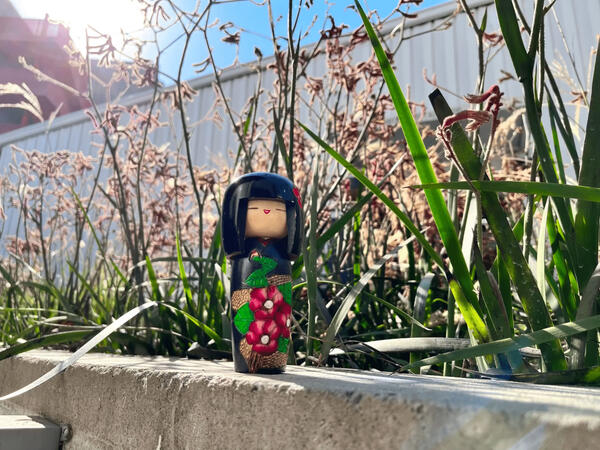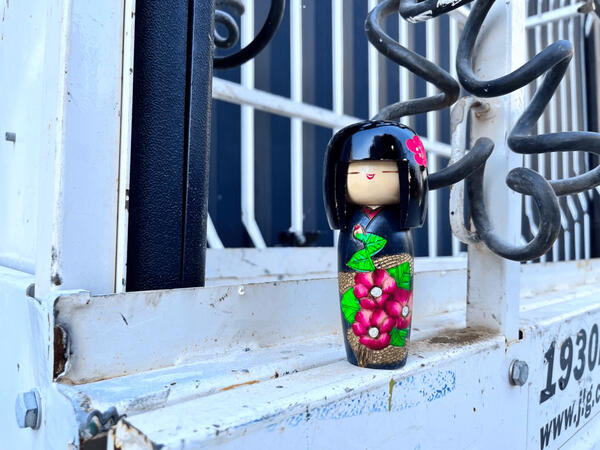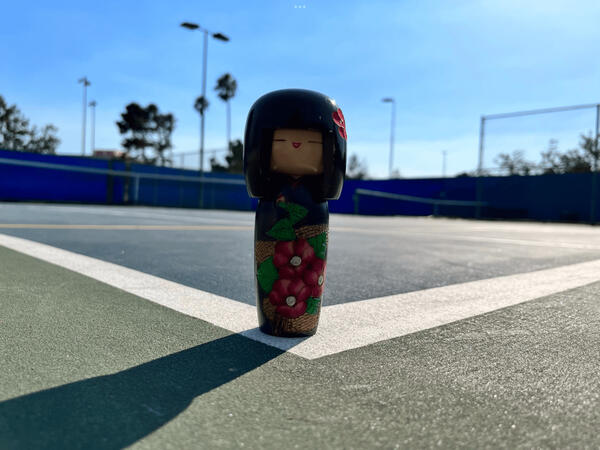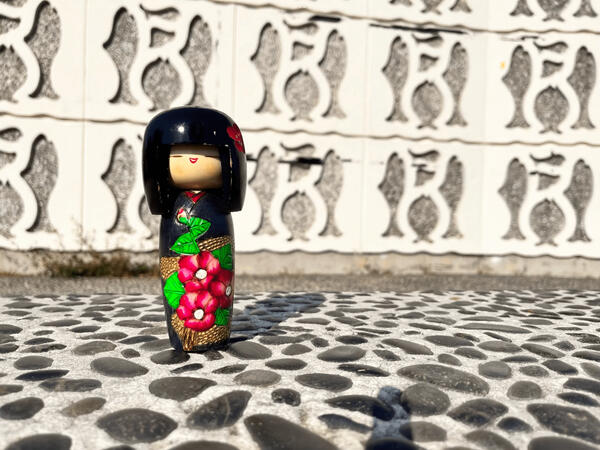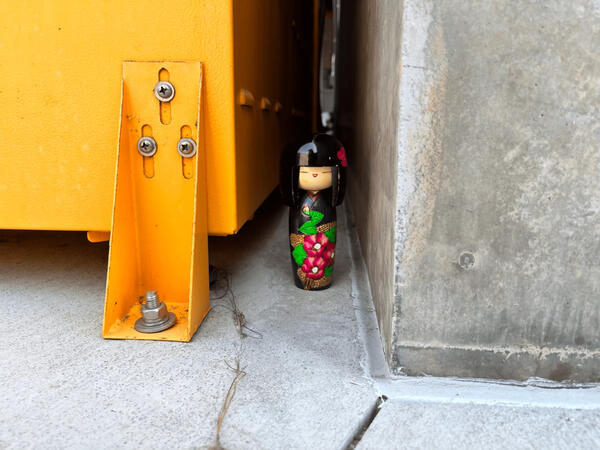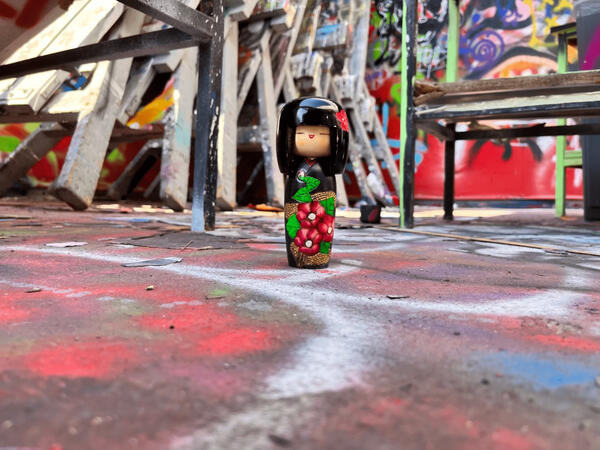REID BUSHONG
"KOKESHI"
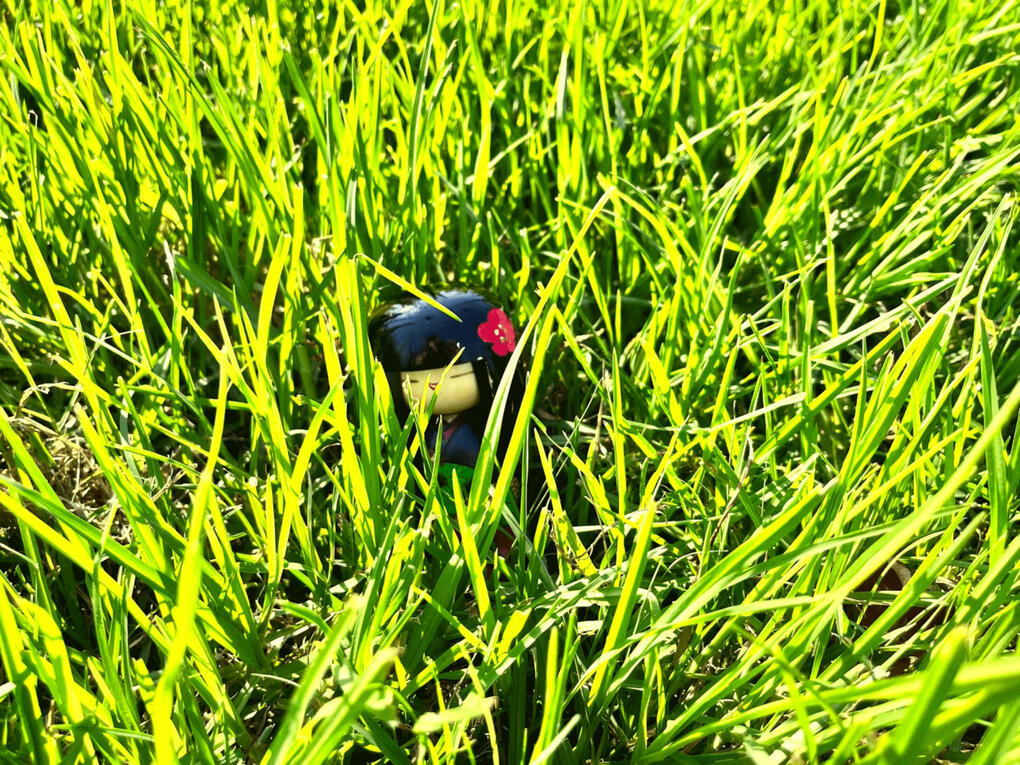
A Testament To Her Practice
What is the compulsion that precedes your practice? To Foundation student Reid Bushong at the Otis College of Art and Design, that compulsion just so happens to be guilt. Since birth, Reid has been surrounded by and tossed throughout the art world. Her Father, as a practicing artist, would often spend time teaching Reid to interact with a variety of media, whilst her Mother and Stepfather exposed her to the arts through more classical and appreciative approaches with an emphasis on historical architecture, international cultures, language, music, and performance. It was without a doubt that Reid would flow into a creative career path…or was it?
Reid expresses in a recent interview, “I’m kept up at night by indecision. I feel that there are two separate paths or choices for my life, and I am currently testing one.” Reid describes how her extension of creative studies is only one side of the coin in terms of her future and career, the flip side being a path of language studies. Growing up in a home where both her Mother and Stepfather spoke multiple languages frequently, Reid found great interest in the core concept of communication, and went on to formally study East Asian Languages for 8 years, conversing regularly at home. And although her passion for language had come to fall on the same scale as her drive to create, there was immense pressure from family, friends, and instructors to commit to a creative career. This pressure held a strong weight on Reid’s mind and took influence in her practice as well.
Despite the conflicting external opinions being thrown around about her future, Reid tentatively continues on a creative path, all the while pursuing a more self-directed approach. In her most recent body of work, titled "Kokeshi", she explores the relationship between found objects, their culture, and source material featuring a hand-carved wooden doll hailing from Japan. With Japanese language and culture especially having such a large role in her childhood and upbringing, this specific object hit home immediately. Through her practice she found a way to unite and correlate a very personal part of herself with her work in a very experimental and almost unconventional manner.
Initial Object Research Short Film
In this beginning stage of her research, Reid studied the object and assessed what it mean to be a "Found Object". Through this process of investigation, Reid found ways to encompass the essence of a found object as well as incorporate the objects native history in a visual experience of non-verbal storytelling.
The art of Sosaku, (Creative), and modern Kokeshi doll making began in the early 1940s, grew and flourished in the 1950s-60s, and well into the 70s. Kokeshi represent a measure of the spirit-infused status of the wood, and they are believed to retain the material's original sacred and natural qualities.
They represent an item of veneration, a child's play thing, or an object of delight. The outer appearance of dolls has constantly changed, but the Japanese love of dolls has remained steadfast.
Crafted Multiples
As a part of the required research, the artist was tasked with creating multimedia duplicates of the object, in this case the Kokeshi Doll, and presenting them as a part of the completed body of work. Reid decided to work in a ceramic medium, crafting an identical terracotta replica, paying homage to the historical craftsmanship of the Kokeshi dolls in her own way.
Final
For the final phase of the project, the task was to work subtractively with the object, and break it down in either a literal or metaphorical sense.
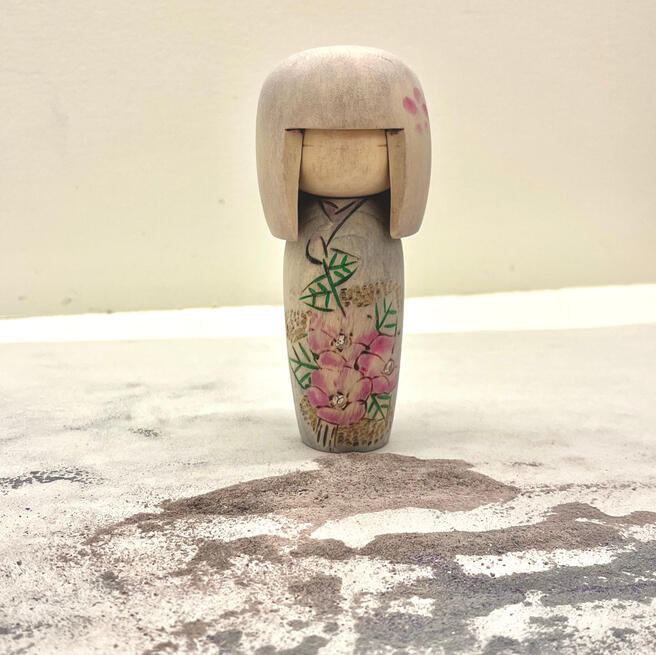
The decision was made to sand the doll down and strip it of its paint. but this proved to be a difficult task as it was discovered during the sanding process, that not only was the wood painted, but also dyed. The head of the Kokeshi was found to be detachable, which aided in grip, but also shed light to the functionality and thought behind the objects simple construction. definitely a feature that would have gone unnoticed if not for the subtraction methods being inflicted upon the doll. The carvings in the wood also proved difficult to sand down, and after multiple hours of sanding, still held their vibrant colors. The object is resilient indeed, but is in truth just wood. The doll was laid in its own colorful ashes for documentation after the sanding process was completed.
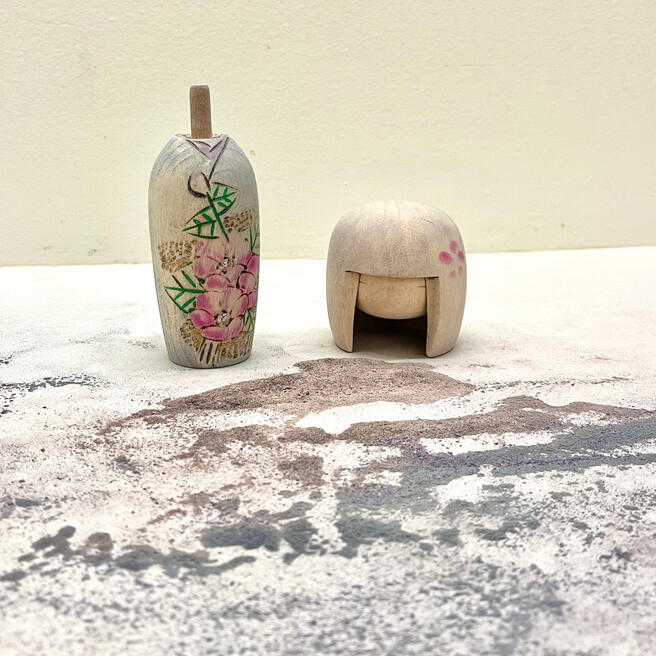
In the end, the strength and resilience of the wood prevailed through subtraction, but what remained was the feeling that even when shed of its skin and stripped down to it's base substance, the essence of the object and its purpose were consistent. craftsmanship is hard to undo, and what is built carefully by hand must also be dismantled carefully by hand. If anything, the wood that was stripped away into a fine dust became something more beautiful than it was before; blending the two mediums into one cohesive yet loose form.
Photo Gallery
A compilation of the artists favorite photos taken throughout the creation of the work, showcasing the literal and metaphorical context of being a "found object."
